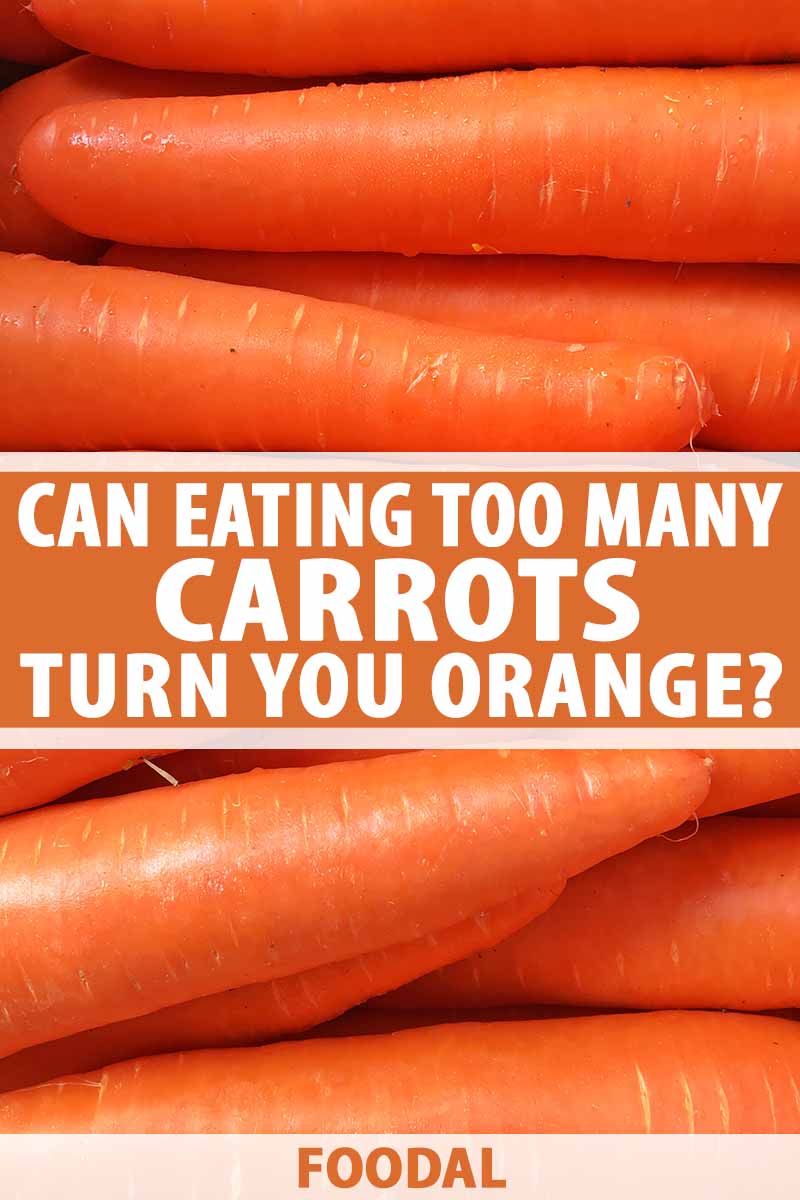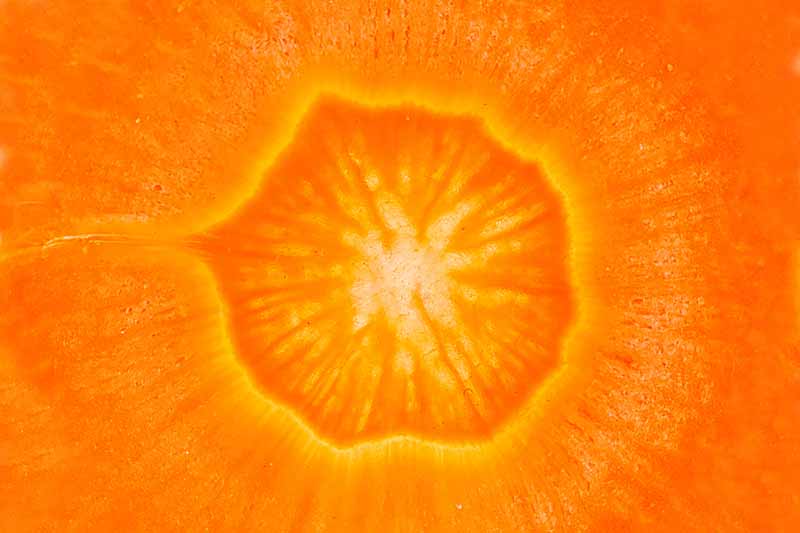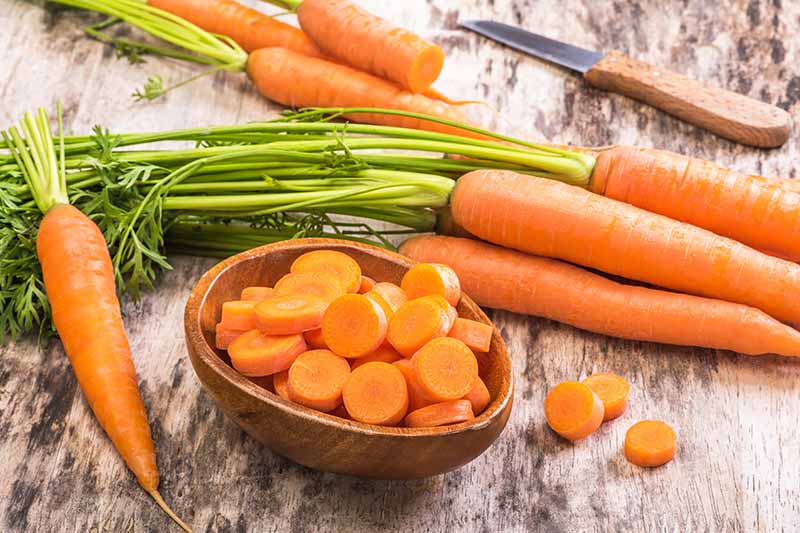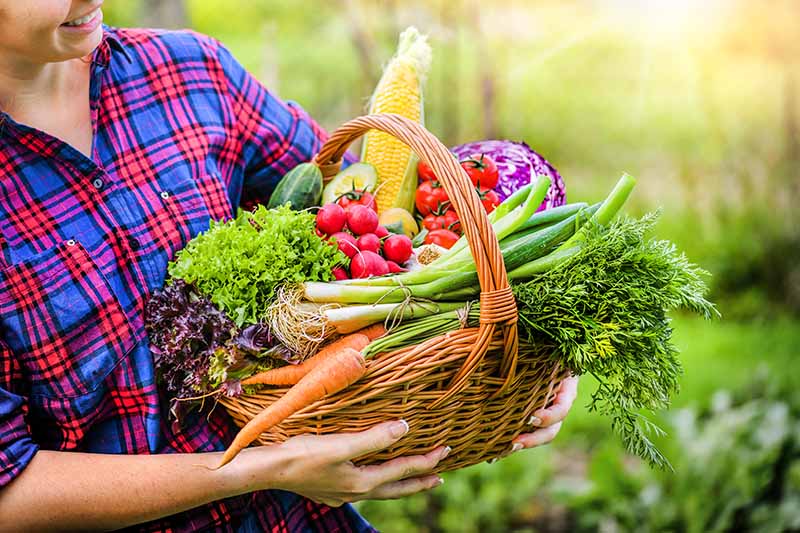Whether they are coined, crinkle cut, diced, juiced, julienned, pureed, or shredded; baked, boiled, fried, roasted, sauteed, or steamed – I love carrots.

My fondness for this bright orange root vegetable dates to childhood years and food intolerances that continue to impact my diet.
And while today’s varieties include black, purple, red, white, and yellow, orange is still my favorite.
In this article, we’ll investigate whether or not eating an excessive quantity of carrots can cause a person’s skin to turn orange. Read on to find out if the possibility is the stuff of urban legend or the real deal.
Here’s what’s in store:
Can Eating Too Many Carrots Turn You Orange?
Let’s get started.
The Powers of Pigment
Carrots are a significant source of vitamin A, and many of us have learned that this essential nutrient is crucial to eye health. It also supports the growth of healthy cells and keeps the immune system running smoothly.

They contain a pigment called carotene. This is what makes them orange. When carotene, especially beta-carotene, is eaten, the body converts it to vitamin A. Because a transformation is required, we call it “proform” vitamin A.
There is also vitamin A that is present in food, requiring no alteration. It is found in meats, fortified cereals, and vitamin pills. In this form, we call it “preform” vitamin A, or retinol.
Nutrient data is often tricky to decipher, especially when it includes the letters “RAE” after vitamin A. They stand for “Retinol Activity Equivalents,” and more or less level the playing field when comparing preform and proform sources of the nutrient. To learn more, you can consult the National Institutes of Health (NIH).
There is no benchmark for beta-carotene consumption because, in and of itself, it does not fulfill a dietary requirement. So, while it is fascinating to know that per the USDA, one medium carrot contains 509 micrograms of Vitamin A RAE and 5,050 micrograms of beta-carotene, what does this really tell us?
Per the FDA, a carrot that is seven inches long and one and a quarter inches in diameter provides 110 percent of the recommended daily value (%DV) of vitamin A, based on an adult diet of 2,000 calories per day.
Besides the possibility of turning orange, should we be concerned about absorbing too much vitamin A? Let’s take a look.
Too Much of a Good Thing
A dermatologist/dermatopathologist at the Cleveland Clinic in Cleveland, Ohio, puts things in perspective.

Dr. Melissa Piliang states that she occasionally sees a patient with orange-hued skin, and the diagnosis is a condition called “carotenemia.” It’s the result of consuming too many carotene-rich foods.
She says that a medium carrot has about four milligrams of beta-carotene and that it would take 40 or 50 milligrams, or eating about 10 a day for several weeks, to affect skin tone.
There are other conditions, like diabetes, jaundice, and kidney disease, that can cause the skin and eyes to look yellowish. These need to be ruled out before taking a dietary history and drawing blood to confirm a diagnosis of carotenemia.
The good news is that carotenemia is reversible. A reduction in beta-carotene intake by otherwise healthy patients resolves the skin tone abnormality.
As for overabsorption of vitamin A with carotenemia, it is an impossibility.
Dietetic Intern Rosy Rojas of the Tufts Frances Stern Nutrition Center says that while carotenemia may alter skin tone, overconsumption of beta-carotene does not cause vitamin A toxicity. Our bodies regulate the conversion of beta-carotene and prevent it from happening.
However, it is possible to consume toxic levels of preform vitamin A in supplement products.
Along the same lines, the Experts at the Mayo Clinic report that studies suggest the use of beta-carotene supplements may increase the risk of lung cancer in people who smoke or were exposed to asbestos.
However, they say that beta-carotene-rich foods are safe and consuming them as part of a healthy diet may lower the risk of lung cancer and heart disease.
In addition to carrots, beta-carotene is present in other orange, red, and yellow vegetables, as well as leafy greens.
A Go-To Vegetable
Carrots are on my grocery list every week. From quick crudité for an impromptu get-together to muffins or bread for Sunday brunch, there’s always something good to eat when they’re in the house.
Find even more delicious carrot recipes, like cumin-spiced crostata with basil and herb-roasted tartines with pesto and goat cheese, here on Foodal.
And if you’ve ever wanted to grow your own, I invite you to visit our sister site, Gardener’s Path, for all you need to know.
You Are What You Eat
I have to admit that I knew the answer to our subject question all along. As a child on a strict food regimen, I was fed a lot of pureed carrots because I tolerated them well.

However, even without a study that shows that eating cooked carrots, especially pureed, results in more beta-carotene absorption than eating raw ones, my family knew it only too well, when I began to turn orange.
My secret is out.
When you feed your little ones, stick to the one-jar serving size, and vary the veggies each day.
As for you, health permitting, enjoy a diverse array of fruits, dairy, protein, vegetables, and whole grains in moderation, for a healthy, non-orange glow.
If you found this article informative, read the following guides to increase your food knowledge next:
- Foods for Good Eye Health
- The Truth About Food Dyes and Your Health
- Sweet, Sweet Sugar: 5 Myths and the Real Facts Explored
© Ask the Experts, LLC. ALL RIGHTS RESERVED. See our TOS for more details. Uncredited Photos: Shutterstock.
About Nan Schiller
Nan Schiller is a writer from southeastern Pennsylvania. When she’s not in the garden, she’s in the kitchen preparing imaginative gluten- and dairy-free meals. With a background in business, writing, editing, and photography, Nan writes humorous and informative articles on gardening, food, parenting, and real estate topics. Having celiac disease has only served to inspire her to continue to explore creative ways to provide her family with nutritious locally-sourced food.




